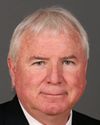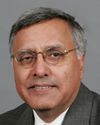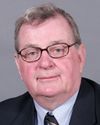Honourable members of Parliament, good afternoon. Bonjour à tous. I'm back again this afternoon to provide you with a short update of Canadian Forces operations in Afghanistan over these last few weeks. My presentation will focus on CF activities, and I'm certainly prepared to provide clarification on my presentation at the end if I can. Questions on the activities of other departments operating in Afghanistan are probably best addressed by them.
The Taliban insurrection remains, for the most part, concentrated in eastern and southern Afghanistan.
In Kandahar province, where Canadian troops operate, the Taliban over the last past months have attempted to re-establish a strong presence to the west of both Zhari and Panjwai districts and west of Kandahar city, and they are likely trying to rebuild their ability to defend areas in which they now operate. Recent Taliban attacks, such as IED attacks--improvised explosive device attacks--and ambushes against convoys moving along main routes, direct attacks against Canadian troops protecting the construction of Route Summit and those that are engaged in its actual construction--and I'll talk about Route Summit a bit further in a minute--and the killing of several prominent government officials and politicians in Kandahar point to a strategy that they're likely to carry out into the winter and whose aims are likely to, first, prevent any meaningful reconstruction or humanitarian assistance from taking place. Taliban attacks in Zhari district in particular continue to dissuade many locals from returning to their homes, while at the same time slowing down or impeding reconstruction.
Second, they'll attempt to prevent any meaningful interaction between the Canadian Forces that are located on the ground and the local population by making it difficult to hold shuras with local leaders and by forcing us to focus on force protection and preventing us from conducting more outreach activities.
Thirdly, they will attempt to undermine the perception that security in the city of Kandahar has improved following Operation Medusa, by conducting suicide attacks against vehicles in the town, killing more local leaders and continuing to carry out intimidation and threat campaigns throughout the city.
Elsewhere, in many rural areas where there is a strong Taliban presence, they will try to consolidate their hold over the population throughout the winter in order to defeat any attempts to spread the Government of Afghanistan influence. Weather in the Kandahar City area and along the Highway 1 corridor may impede Taliban activity over the winter months.
The next slide gives you a snapshot of the insurgent activity against coalition forces over the last two weeks. You'll note that there has been a reduction in the amount of Taliban activity, certainly in our area, in comparison to late summer and early fall, when Taliban activity was much higher.
As described in this slide, the types of attacks used by the Taliban are quite wide. Our recent defensive stance has forced the Taliban to use indirect fire attacks, such as rocket or mortar attacks, in order to engage us. Furthermore, they still demonstrate the knowledge and skills to mount improvised explosive device attacks as well. However, they have somewhat pulled back from conducting direct attacks using small arms and rocket-propelled grenades. Perhaps they want to prevent being fixed on the ground by our battle group, with its manoeuvrability and firepower.
To be sure, our presence in Kandahar province is essential if Afghanistan is to move forward. A steady and patient approach will demonstrate the resolve of the international community to make a difference. We are in Afghanistan to support the Afghan authorities and are determined to help them win the confidence of the people, so that a functional state can be built and the reign of terror by the Taliban can be neutralized. We certainly hope that all Taliban activity will reduce and that they will help to support the elected Afghan authorities. That's certainly our aim.
The next slide shows the current ISAF situation. The Commander ISAF's operational main effort remains in setting the conditions for the establishment and expansion of Afghan development zones. Certainly General Richards, along with all Regional Command commanders, is focused on this in order to make it a reality.
Perhaps I will spend a minute describing the Afghan development zone concept a bit further. The ADZ or Afghan development zone concept offers an excellent opportunity to bring together security, governance, and development in a timely and fully coordinated manner. The ADZs will establish regions that are sufficiently safe to allow a focus on reconstruction.
Commander Regional Command South's main effort is to develop the Kandahar City ADZ. This is being accomplished by establishing defined areas where development can be optimized through the maintenance of security. We will promote Afghan governance to initiate, prioritize, and execute development initiatives and projects to make a difference. We hope to stimulate the interests of other communities to embrace the concept and create a need.
Essentially, the ADZ concept is created as follows. First, security forces attempt to clear the area of insurgents. Secondly, they maintain a presence to ensure security of development projects by embedding security with the Afghan National Army and Afghan National Auxiliary Police, as well as ISAF, and by promoting a PRT presence. The PRT and other development agencies then roll out a concentrated spending on projects that have a key economic and social multiplier value, such as bridges, roads, wells, or clinics. ISAF offers a quick reaction capability to protect these ADZs against renewed insurgent activity. Lastly, ISAF continues to assist in the coordination of overall government–donor synchronization within the long-term government development strategy.
If you want to know what our troops are involved with today, that's what they're involved with, and that's what General Richards is focused on. The easiest example I can give you is that we want to create Kabuls, or a type of situation similar to what we have in Kabul, in the rest of the country. Kabul represents an excellent example of an ADZ where things are secure with some assistance from us. We definitely want to spread that across the country, and it is certainly what we will try within the Kandahar province, namely in Kandahar City.
This slide shows how the structure of the Canadian command, Afghan Regional Command South, has changed over the course of the mission. ISAF took over Regional Command South during Operation Enduring Freedom, implementing Stage 3 of the NATO expansion plan. Canada commanded Regional Command South between February and August 2006.
On 1 November 2006—not all that long ago—the ISAF Regional Command South command structure was modified as a result of the transition of command from Canadian to Netherlands lead. Joint Task Force Afghanistan used this opportunity to reorganize the command and control structure in order to gain unity of command, purpose, and effort under one Canadian commander. That commander is now Brigadier-General Tim Grant. He has been there approximately two weeks—since November 1—and is now the commander of the Canadian contingent. As you well know, Dutch Major-General Ton van Loon is now leading the Regional Command South headquarters. It's a Dutch lead. He has a Canadian as his chief of staff—a full colonel—and there are Canadians who are working within that headquarters.
In Regional Command South, the transfer of lead nation to the Dutch was successful. In Task Force Uruzgan, which is the Dutch–Australian team, framework ops, base construction, and security operations continue. Platoon patrols are being conducted in the vicinity of Dehrawudd and in the vicinity of Tirin Kot in order to establish an ADZ in that province. Under Task Force Helmand, the British continue operations throughout Helmand province to prevent insurgent infiltration. Task Force Zabul, which is composed of our U.S. and Romanian colleagues, currently continues its framework patrols and convoy escort duties along Highway 1, and Qalat has been formally declared as their ADZ in that particular province.
There has been no significant change to the 1 RCR Battle Group force disposition over the past couple of weeks. CO 1 RCR Battle Group's main effort continues to be the provision of security with the Afghan National Security partners throughout the Zhari and Panjwai area in order to contribute to the establishment of the Kandahar ADZ. Of note, November 3 saw the first graduation of 41 Afghan National Auxiliary Police—ANAP—candidates destined to go into the Panjwai–Zhari area.
The PRT opened the Sham-e-Dinkkar Middle School, located across from the Provincial Development Centre in Bazaar-e-Panjwayi. In addition, the PRT hosted a series of VIP visits, including the Chief of the Land Staff, the president of CIDA, the deputy clerk of the Privy Council, and the Canadian Ambassador to the UAE.
The observer mentoring and liaison team, some 64 personnel, continued its training program and liaison duties between the battle group and those Afghan battalions, known as kandaks, deployed in the Zhari–Panjwai area.
The PRT has now completed 18 of 35 planned projects. The PRT has assisted in the distribution of food, water, blankets, and tents throughout the Panjwai region. DND funding in this regard, in the form of a commander's contingency fund, CCF, has been increased to over $3 million, which is indeed a very good trend. Yes, the figure is different from the last time I was here, but as the demand from the field increases for more projects, they're certainly considered here and then more money is assigned if they make sense. As I say, I think this is a positive trend, because these are reconstruction efforts.
Family food packages are designed to provide 2,000 calories a day for six people for a month. That's the size of the food packages we're delivering, and we have delivered over 10,000 of these packages. General Gauthier mentioned that when he was with you last week.
In the Province of Kandahar, over the past six weeks four medical visits to villages have been arranged in conjunction with the tactical group. Over 2,000 Afghans in the outlying regions of Panjwaii and Mienishin have received basic medical care and drugs.
In partnership with the Afghan Minister of Health, local physicians and dentists have provided care to the people of the region. In addition, drugs, tools, school supplies, food, blankets, toys, carpets and radios have been distributed.
The Provincial Reconstruction Team has provided over 100 diagnostic kits to the Mirwais nursing school, in the city of Kandahar, where nursing students recently began their studies in October 2006.
On the next slide, let me draw your attention to the Afghan National Auxiliary Police growth in Kandahar province. Again, this is a small step that will hopefully lead to bigger ones in the future.
The next slide gives you a good overview of the types of assistance and work that the PRT is accomplishing: the key leader engagements, or shuras, with local officials; the food packages and food carts that we've distributed over the last week—and you can see the cumulative totals in the right-hand column; non-food aid packages distributed, such as blankets and the like; and some of the Afghan National Auxiliary Police training that's ongoing—and the screening and mentoring of these individuals with the RCMP and our own Canadian military police is a core piece of the training that these auxiliary police receive.
Village shura damage lists have been worked on over time, not in this particular week, but there are 227 claims. That's a case of the CIMIC officers getting out and about in the Kandahar province and talking to local officials, the elders within tribes and within the various villages.
Quick Reaction Force patrols are dispatched by the PRT to assist the Afghan authority, and you can see the number of presence patrols that we conduct to give local folks in Kandahar province some measure of comfort by our presence. It gives you a good sense of what has been accomplished, certainly over the last week, and I hope to report on that regularly when I come to see you.
I had a complete slide here to discuss Route Summit, but I think General Gauthier was here recently and described it. Maybe I'll cut down on the presentation by simply saying that the efforts to date include identifying the donors and doing all the infrastructure planning. The arrow points to where the route is actually going in in Kandahar City, just a little bit further to the right on the slide. The reconnaissance and land clearance are certainly under way and we're well advanced on them.
We all hope to see progress in the weeks ahead. I know General Leslie was actually staring at Route Summit last week. Over the last few days, it has actually been raining very heavily in Afghanistan. Flooding in excessive amounts makes the road almost impassable. And you've read in the papers about the conditions of talcum dust from the desert. So it has been extremely difficult for us to do any work this week, but we're quite hopeful that this highway will get built over the weeks to come.
Route Summit will demonstrate a major investment project that can change the livelihoods of local communities by ensuring the transfer of goods between Kandahar and the Zhari–Panjwai communities. It should reduce travel time by allowing the locals to travel a paved surface. We will certainly be focused on that over the next several weeks and months ahead.
I thought you would find this next slide useful, to see where our Canadian Forces personnel involved in Afghanistan, who number just over 2,400, are currently deployed, certainly in Kandahar and supporting those in Kandahar, and then within Kabul itself.
Let me conclude by saying that you'll be happy to know that the Nyala, the RG-31, is in full use in Afghanistan with the Canadian Forces. The RG-31 has a mine-resistant hull and lightly armoured sides. The steel hull protects against rifle-calibre bullets, but more importantly, against mines and IEDs. RG-31s are large vehicles. They look like SUVs, but this vehicle does dwarf the G-Wagon in size.
As observed earlier, the Taliban have demonstrated both the will and the knowledge to use improvised explosive devices against the coalition. We've had to adapt in order to maintain the initiative and protect our troops by increasing our RG-31 fleet.
You can never completely defend against an explosive payload, as a bigger one can always be constructed. However, we believe we've mitigated a vulnerability. Again, this is a great example of very quick adaptability in getting the front-line soldiers some vehicles to conduct their duties a little more safely.
Mr. Chairman, that concludes my update.











